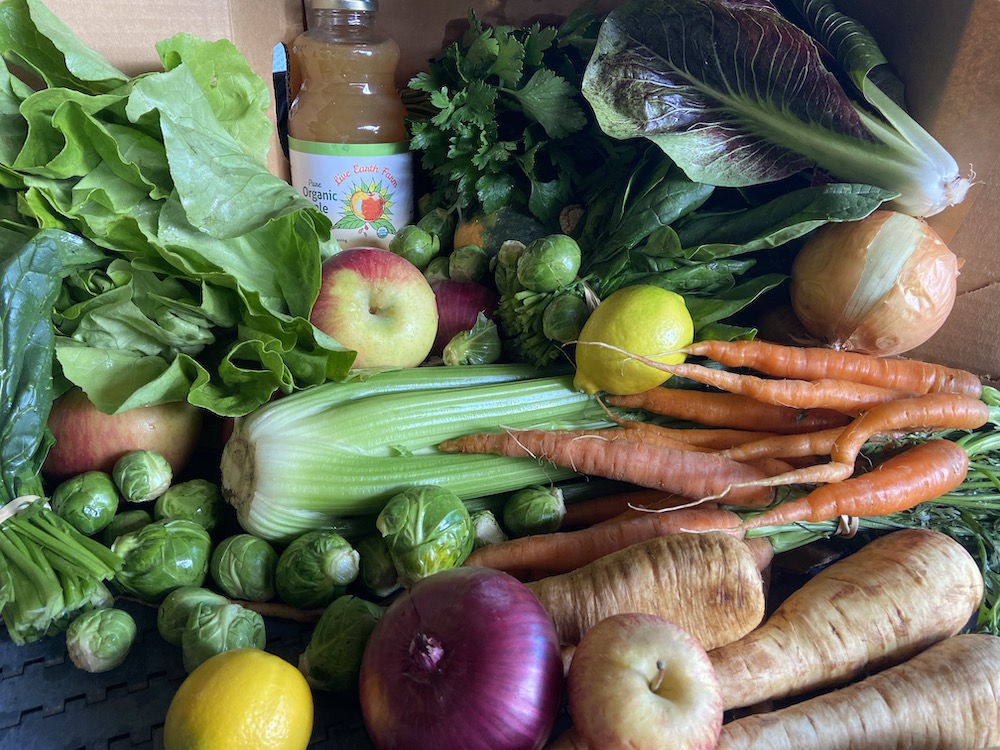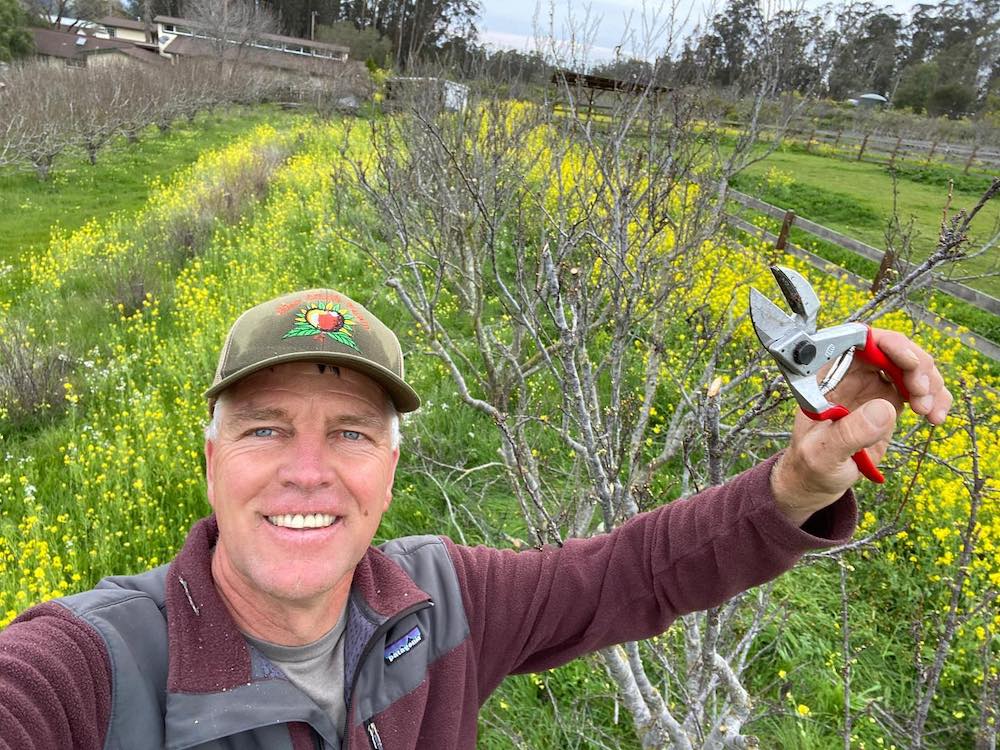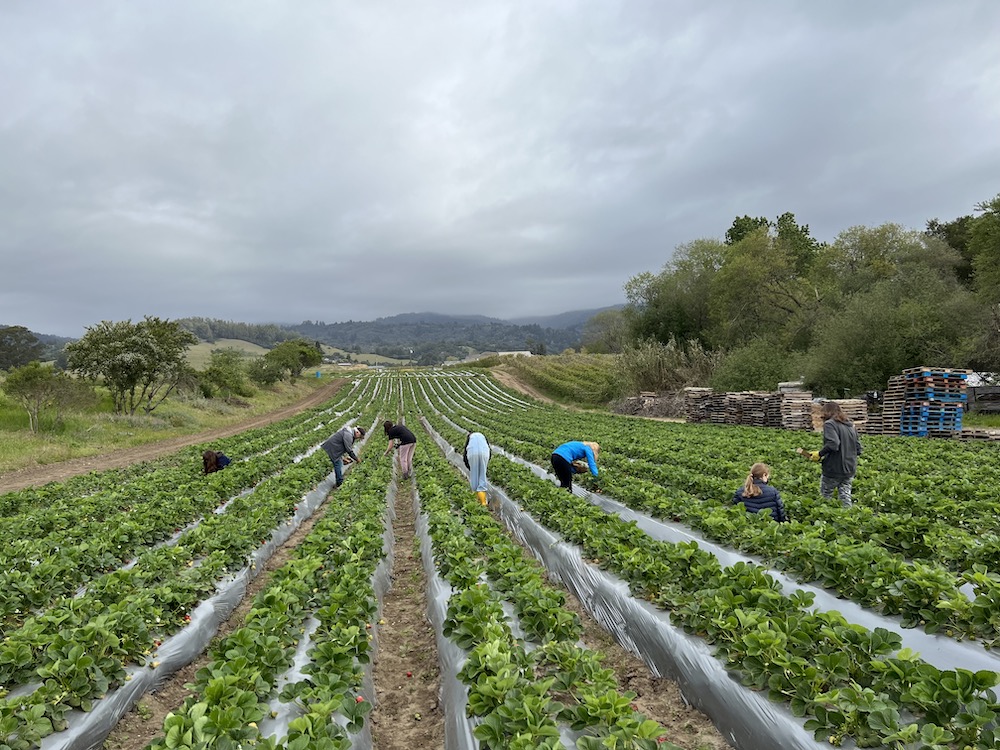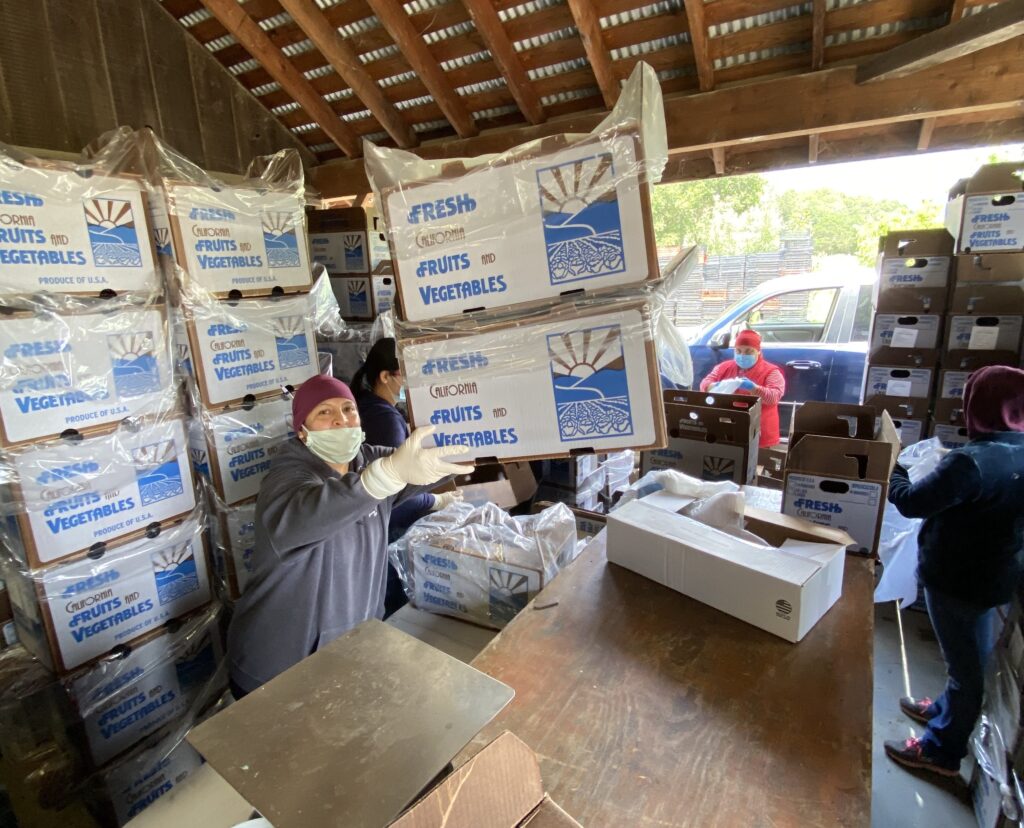
February 21, 2023 – As fraught as the last three years have been, the pandemic hasn’t been without a silver lining or three. For family farms and ranches nationwide, the pandemic disruption to the food supply and restaurant closures forced an abrupt pivot to how they did business. Suddenly, the public was acutely aware of the need to support and preserve their local foodshed, while growers received reinforcement that direct sales are the key to the survival of small farms.
Those sentiments are at the heart of national CSA Week (February 20-26) and to celebrate Edible Monterey Bay talked to Tom Broz, founder of Live Earth Farm and one of our region’s original CSA operations. Read on for his insights on how Community Supported Agriculture has changed over the decades, and why the pandemic saved his CSA.
Broz and his wife, Constance, established Live Earth Farm in 1995, on one-and-a-half-acres in Watsonville. A graduate of USSC’s Center for Agroecology apprenticeship program, Broz started his organic farm specifically with a CSA in mind.
“My passion for regenerative agriculture has always been connected to that concept,” he says. “It was my way of connecting with our customers and the public, and it’s remained at the heart of what we do, along with education.”

Live Earth’s CSA was an immediate success, says Broz, and quickly grew to nearly 300 members. In those early years, there were no computer programs or platforms designed to help farmers manage their CSAs, so keeping track of memberships was time-consuming. Live Earth created a spreadsheet database, but it wasn’t until the dedicated CSA platform Farmigo launched in 2011 that Broz was able to take his program to the next level.
“We were one of the guinea pigs for Farmigo, which is what enabled CSAs to enter the computer age,” he says. “It allowed us to organically transition into a more customer-oriented program where members could customize their boxes (Live Earth’s CSA includes products they don’t make or grow, like bread, eggs, citrus, and mushrooms, all from the Monterey Bay area).” Farmigo also enabled Live Earth to extend its CSA season from 30 to 50 weeks a year.
Broz says he initially established his CSA as a “risk sharing concept” in which members make a financial commitment to the farmer by paying an upfront payment for a commitment by the farmer to offer a portion of the seasonal harvest in the form of a weekly share/box of produce.
The CSA enabled Broz to slowly expand the farm’s acreage. Today, it inhabits 150 acres where Broz and his team of 30 cultivate more than 50 different types of fruit and vegetable crops. As the farm grew, tours and related educational endeavors became an adjunct to the CSA; a way of allowing members learn firsthand where their food comes from and how localized food systems work. In 2009, Live Earth established its non-profit Farm Discovery, designed to empower youth and families by transforming their relationship to food, farming and nature. Programs include tours, field trips, u-picks, immersion programs, workshops and for the first time this year a Spring Break Camp.

That same year, food hubs like Bay Area company Good Eggs launched, providing consumers with personalized shopping and home delivery; Instacart and other platforms soon followed Amazon Fresh, meanwhile, debuted in 2007, but the corporate behemoth’s personalized grocery shopping and delivery service exploded following the company’s purchase of Whole Foods in 2017.
“(Those companies) really put a dent (in our CSA),” says Broz. “Small to mid-size farms just can’t compete, especially with home delivery (instead of pick-up locations).”
By early 2020, Broz says he was seriously contemplating pulling the plug on the CSA, or at the very least, reducing the number of pickup points. “We were down to about 300 members and spread too thin. It simply wasn’t sustainable.”
With pandemic quarantines, however, came media reports of domestic and international food shortages due to supply chain disruptions. Suddenly, CSAs across the country were booming, and Live Earth was one of them. Membership spiked to 1,300 and the farm had to create a waiting list.
“I think there was a shift in consciousness around food in general,” says Broz. “People were stuck at home, and they were suddenly concerned about their foodshed and supply issues. They were also cooking from scratch a lot more, which increased demand.”
While food hubs and grocery delivery companies also experienced growth, Broz believes that CSAs were favored by many consumers because Americans were experiencing the shortages firsthand. “Suddenly, people were looking at local farms as the most resourceful way to procure food.”
Because of Farmigo, Live Earth was also perfectly positioned to respond to a dramatic increase in CSA subscriptions, and it had implemented plastic-free boxes prior to the pandemic to maximize sustainability. With two new, additional pre-pandemic delivery trucks and the farm’s long-standing relationships with other local growers, the CSA was able to accommodate and handle the demand.

“A lot of people in the community knew we open our space to the public, and pickups at the farmstand went from about 15 pre-pandemic to 150. Everyone was looking for a way to get outside while still being safe,” says Broz. To expedite sales for customers leery of lingering in public, Live Earth began offering $20 “grab-and-go” boxes at the farm stand and farmers market and Live Earth also implemented a year-round food access and produce donation program to help those in need.
To facilitate COVID-safe protocol, Live Earth’s field workers and packing shed employees began working in small pods, a practice still used today. “It’s a more effective way to manage our team,” says Broz, noting that his was also the first farm in the region to get all of its workers vaccinated through a vaccination program. Sixty percent of the workers also live on the farm, and Live Earth subsidizes housing for the others. Broz refers to his employees as “family” and notes that experiencing the pandemic together further strengthened those bonds.
Despite the many hardships wrought by the pandemic, it helped Broz remember why he started his farm in the first place. “It allowed us to focus solely on our customers. No retail, no restaurant sales; just a small, organic farm doing direct sales. It was just like back in the day,” he says.
While CSA membership dropped to 750 last summer as travel opened up, the number of subscribers currently holds steady at 900. Still, Broz says the need to “regroup and rethink” strategies is never-ending for small to mid-size farms. “We’re always trying to find a way to support ourselves, even as we serve a very important role in foodsheds.”
Broz hopes that as the pandemic subsides, consumers won’t forget the role that CSA’s have in society. “For anyone who believes in the importance of a sustainable, regenerative food system, CSAs are gems that need to be protected and supported, especially around urban centers like the Bay Area,” he says. “Family farms do more than just grow food; we strive to create a resilient community.”
Don’t forget to check out Edible Monterey Bay’s newly updated CSA guide!
About the author
Laurel Miller is a food, spirits and travel writer and the former editor of Edible Aspen. She grew up on a California ranch and has been writing about regenerative agriculture for over 20 years. When she’s not tethered to her laptop, Miller enjoys farmers markets and any trip that requires a passport. She’ll take a Mission burrito over a Michelin star, any day.
- Laurel Millerhttps://www.ediblemontereybay.com/author/laurelmiller/
- Laurel Millerhttps://www.ediblemontereybay.com/author/laurelmiller/
- Laurel Millerhttps://www.ediblemontereybay.com/author/laurelmiller/
- Laurel Millerhttps://www.ediblemontereybay.com/author/laurelmiller/



